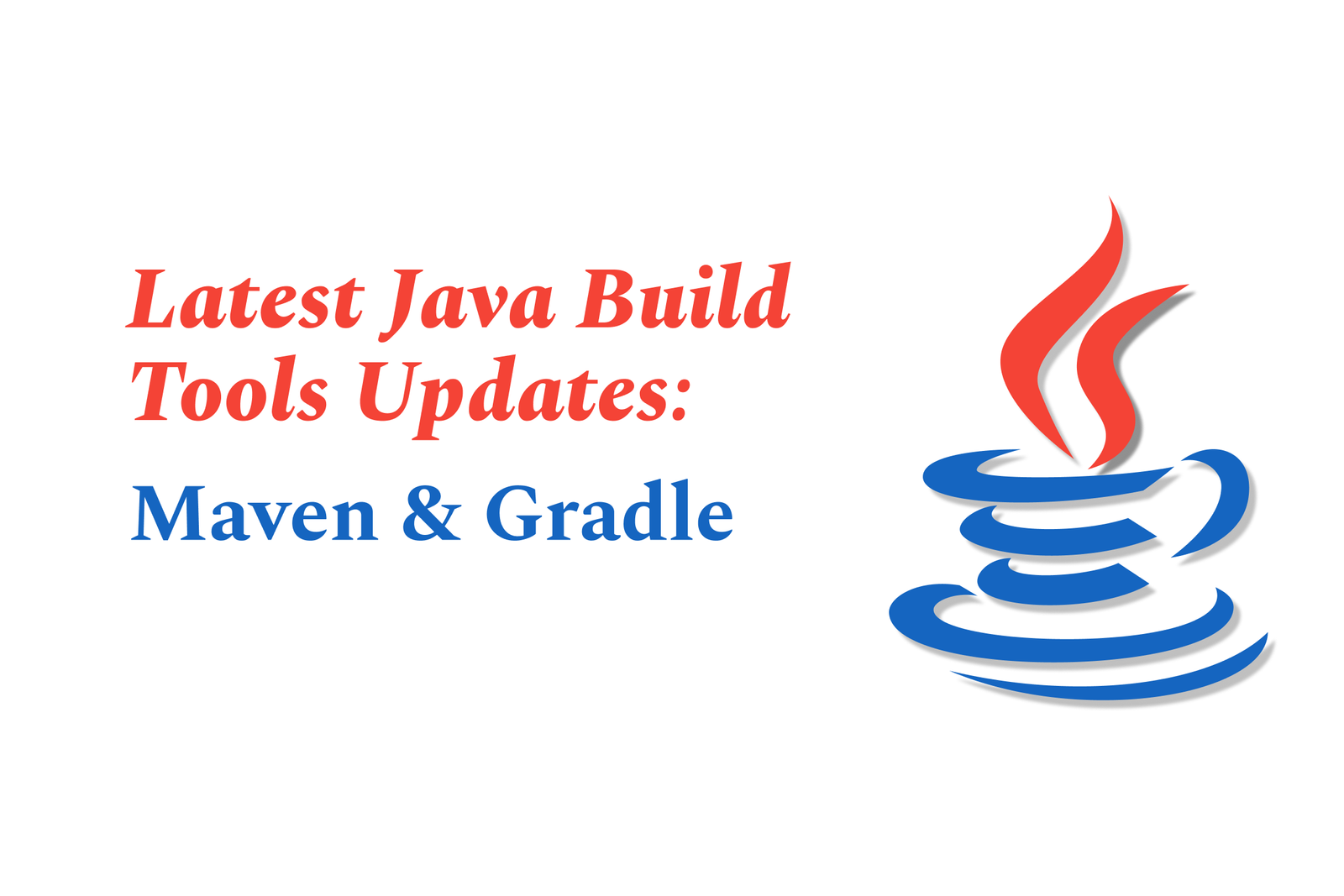Latest Java Build Tools Updates: maven & gradle
The latest Java build tools, Maven and Gradle, continue to enhance developer productivity with improved plugin support, faster builds, and better Java version compatibility. Maven focuses on stability and standardization, while Gradle offers flexibility and advanced DSL features.
Latest Java Build Tools Updates: Maven & Gradle
1 ) Overview of Maven and Gradle in Java Development
Maven and Gradle remain two of the most popular build tools for Java projects.
Maven uses an XML based project object model (POM) for managing compilation, testing, and packaging.
Gradle is known for its flexibility, performance, and support for multiple languages including Java, Kotlin, Android, and native development.
2 ) Recent Updates to Maven
Liberty Maven Plugin 3.8.2 is the latest release, enhancing support for running applications on Open Liberty.
Emphasis on rapid iterative development with Liberty tools integrated into popular IDEs like Eclipse, Visual Studio Code, and IntelliJ IDEA.
Maven 4 introduces new APIs and provides upgrade tools for smooth migration.
Community support is extensive and includes mailing lists, Slack channels, and detailed documentation.
3 ) Recent Updates to Gradle
Liberty Gradle Plugin 3.6.2 supports Gradle 8.x, enabling seamless building and packaging of applications.
Gradle 9 highlights introduce new features improving declarative builds and developer experience.
Gradle uses Groovy or Kotlin as DSL for build scripts; Kotlin DSL is gaining adoption due to static typing benefits.
Gradle excels in multi language and platform builds, supporting Java, Kotlin, Android, JavaScript, and native projects.
The Gradle wrapper ensures projects use a consistent Gradle version regardless of local installation.
4 ) Choosing Between Maven and Gradle
Maven is widely adopted in enterprises, especially where standardized Java builds are sufficient.
Gradle is favored for complex projects needing flexibility, performance, and multi language support.
Kotlin and Android projects tend to prefer Gradle due to better integration and earlier feature adoption.
IDE integration may influence tool choice; Maven has excellent support in NetBeans, while Gradle tends to integrate well with IntelliJ IDEA and Android Studio.
5 ) Common Issues and Solutions
Java version compatibility is critical; for example, Gradle 8.3 does not support Java 22, causing build failures.
Using the Gradle wrapper avoids version mismatch problems.
Clearing Gradle caches and adjusting the Java toolchain in builds can resolve compatibility and build errors.
6 ) Community and Resources
Both Maven and Gradle have active open source communities providing plugins, documentation, and forums.
Tools like Liberty Plugins for Maven and Gradle improve cloud native Java application development.
DPE University and Develocity offer training and webinars to keep developers updated on Gradle ecosystem innovations.
7 ) Conclusion
Maven and Gradle continue to evolve, offering robust support for modern Java development.
Developers should choose the build tool that best fits their project requirements, team skills, and technology stack.
Staying current with plugin and tool updates ensures improved productivity and compatibility with the latest Java versions.
https://justacademy.in/news-detail/flutter-vs-unity-for-game-dev-2025
https://justacademy.in/news-detail/latest-android-app-trends-in-2025
https://justacademy.in/news-detail/ios-19-new-camera-apis-and-photokit-updates
https://justacademy.in/news-detail/swift-package-manager:-tips-for-dependency-updates
https://justacademy.in/news-detail/flutter-lts-release:-what-it-means
Related Posts
In 2025, top Angular libraries offer modern, feature-rich components and tools for building dynamic web apps. From powerful data grids to low-code platforms like UI Bakery, these libraries enhance development speed, UI design, and scalability, making them essential for Angular developers.
Migrating from AngularJS to Angular 17 involves gradually upgrading your app by running both frameworks together using tools like ngUpgrade, rewriting components in TypeScript, and adopting Angular’s modern architecture to enhance performance, maintainability, and long-term support.
Angular state management tools help organize and handle app data efficiently, improving scalability and maintainability. Popular options include NgRx for robust, RxJS-based patterns, and newer Signal Store solutions that offer simpler, reactive approaches integrated tightly with Angular’s latest features.
RxJS in Angular empowers developers to manage asynchronous data streams with powerful operators like `forkJoin`, `combineLatest`, and `zip`. Mastering these key operators in 2025 is essential for building efficient, reactive applications that handle complex event sequences seamlessly.
Angular performance optimization in 2025 focuses on improving app speed and responsiveness by using techniques like OnPush change detection, lazy loading, efficient data caching, and AOT compilation. These practices reduce load times, enhance user experience, and ensure scalable, fast Angular applications.
In 2025, Angular remains preferred for large-scale, enterprise apps with its robust, all-in-one framework, while Vue attracts developers seeking simplicity and fast development for smaller projects. Both frameworks excel, with choice driven by project needs and team expertise.
Angular Signals are a new reactive primitive in Angular 16 that enable fine-grained, efficient change detection by automatically tracking dependencies and updating only affected parts of the UI. They simplify state management and boost app performance, revolutionizing Angular's reactivity model.
Angular interview questions to prepare in 2025 focus on core concepts like components, directives, data binding, routing, and dependency injection, along with TypeScript mastery and latest Angular features to ensure strong practical knowledge for building scalable, efficient web applications.
AngularJS reached its official end of support in January 2022, meaning no further updates or security patches. To ensure app security and performance, developers should consider migrating to modern Angular versions or seek third-party long-term support options if immediate migration isn’t possible.
The Angular Roadmap 2025 highlights upcoming features focused on improving developer experience and performance, including zoneless Angular, Signals integration, enhanced Forms, async data handling, improved HMR, and expanded Angular Material/CDK enhancements, driving modern, efficient web app development.










